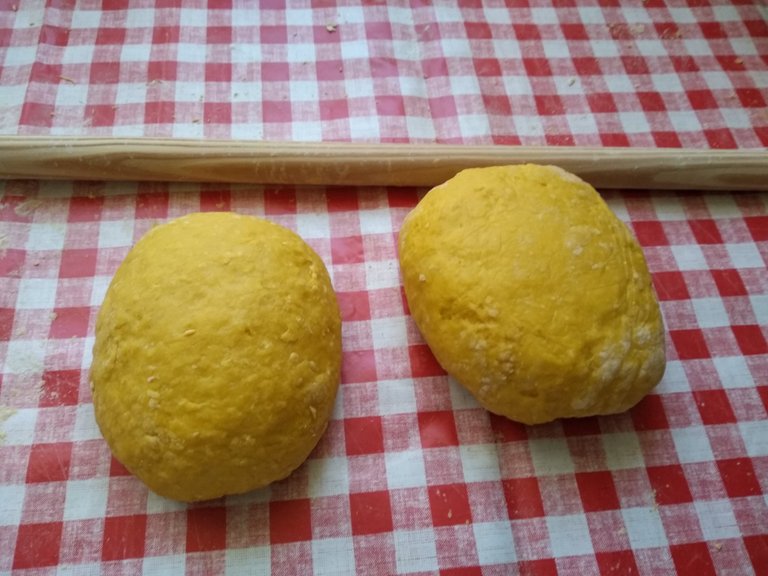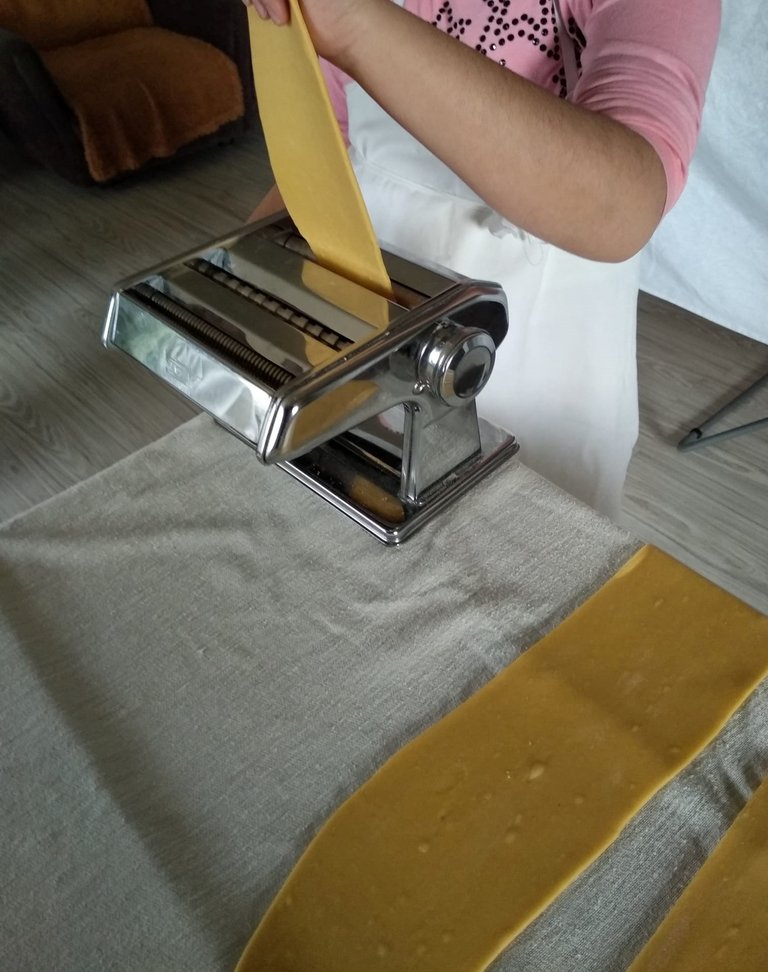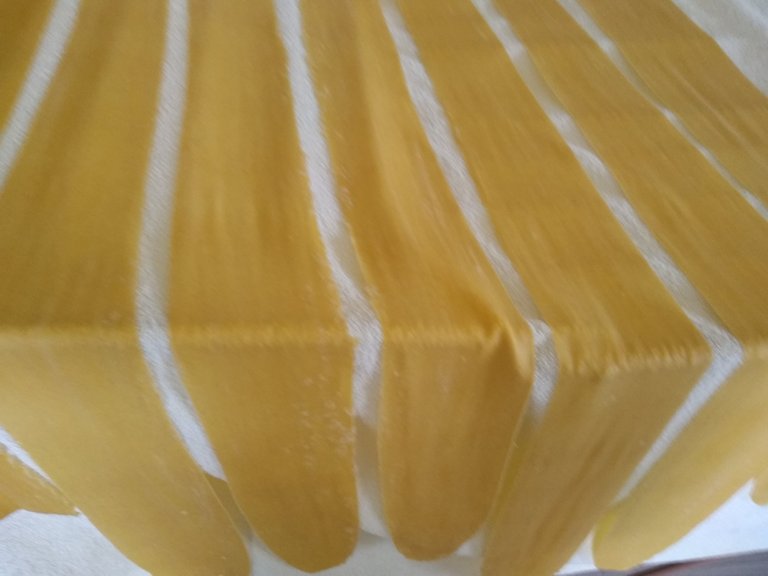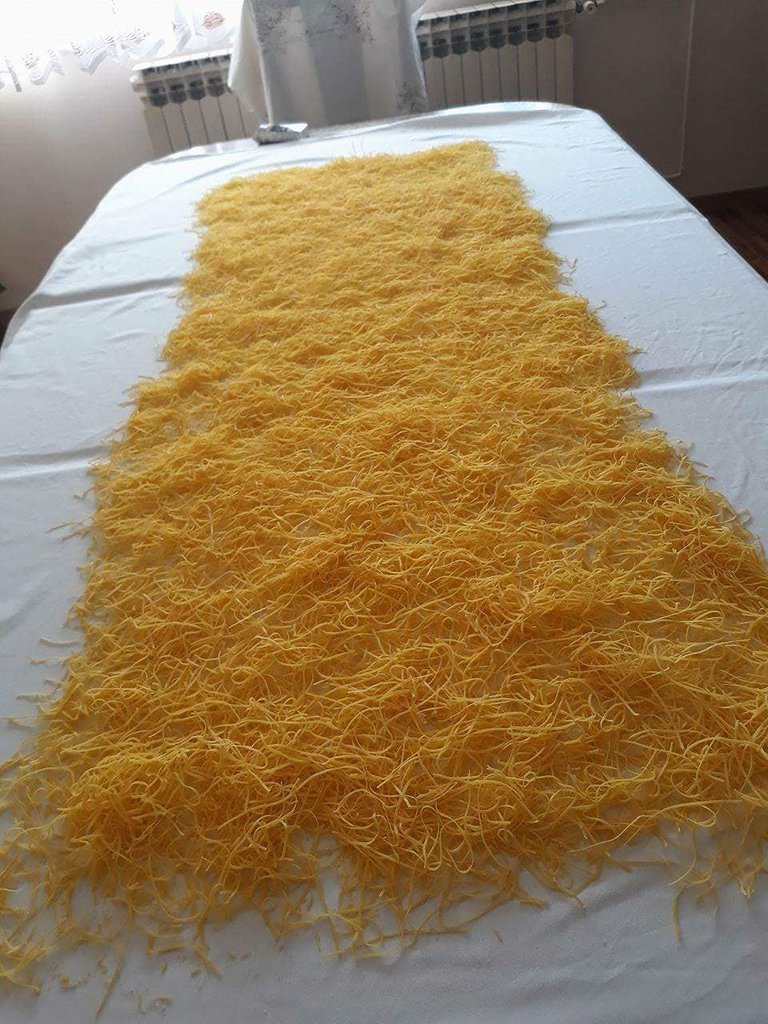The story of pasta is incomprehensible, and one can only guess where its original origin came from. Some claim that Marco Polo brought pasta from China to Europe, others claim that it is originally Italian. The oldest records of pasta date back to East Asia and are about four thousand years old.
In ancient times, both the Greeks and the Romans knew pasta dishes, so the names "light" type of lasagna-like meal and "trakta", which was a type of noodle, are mentioned.
But I make homemade pasta at home.
This is my noodle making.
800 g sharp flour
6 eggs
220 ml of water
In a suitable bowl, weigh the flour, add the eggs and half the amount of water. Combine the ingredients, add a little water. Knead a very hard dough. This is very important because otherwise there will be problems with cutting and drying, it will stick.
I don't knead the dough to be completely smooth, I just combine the ingredients. The rest will be done by a dough machine.

Leave the dough to rest for about half an hour.
Cut into smaller pieces.
Pass each piece of dough through the machine to the thickest (for me at No. 1). Roll out the dough about 5x, to get a smooth piece. This is the part that the machine does instead of kneading by hand. Since I have problems with my hands, I had to cope. In addition, by folding several times, a very fine and smooth dough is obtained.
Lay on a tablecloth.


Lightly flour each piece, only on one side, ie the one on the top.
On the typewriter, move the thickness to no. 3 and roll out the dough only once. Turn the floured side down on a tablecloth.
Then move the stretching thickness on the typewriter again - this time to no. 5.
Lightly flour the strips of dough again. Pass through the typewriter and turn the floured side down again, ie on the tablecloth.
If the dough is wide, it is thick enough. Flour the strips, dry them briefly, cut them to a width of about 5 cm and cut them into pieces for the shiitake dough.
If you want soup dough, move the machine to no. 6 or even no. 7 who loves very fine and thin dough. Flour again and roll out each piece (optionally shorten the strips of dough to smaller, but not necessary).
Since the dough is quite thin, there is no need to dry it. It is enough to flour again and can be cut on the part for small noodles.
True, sometimes it is easier to buy in the store pasta, noodles, but homemade is much better and tastier.
Greetings, I hope you found my noodle making interesting.